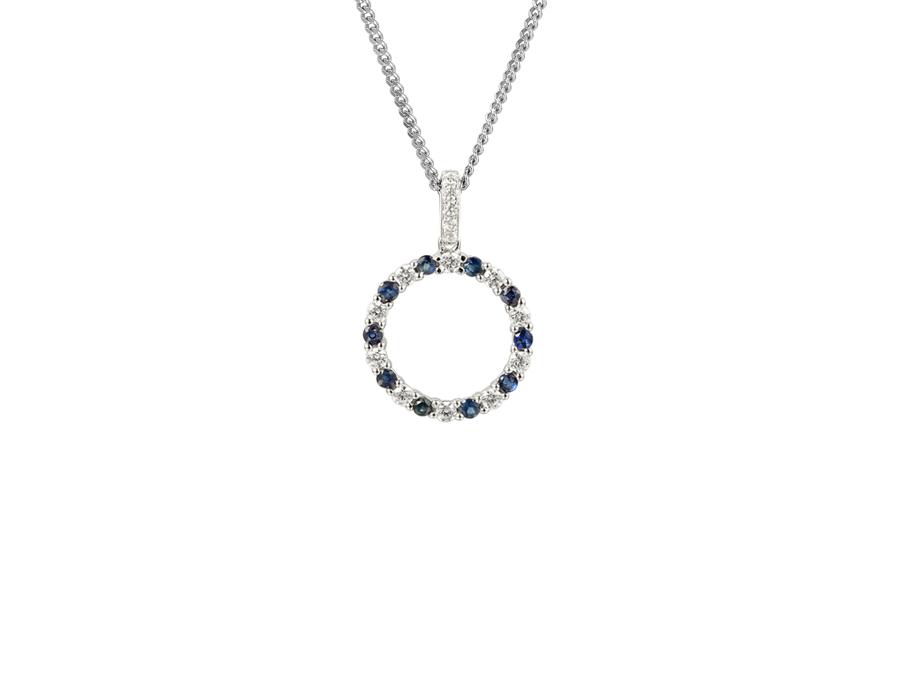We use cookies to make your experience better. To comply with the new e-Privacy directive, we need to ask for your consent to set the cookies. Learn more.
Jewellery Jargon Defined
If you're not a jeweller, or are just starting to build up a jewellery collection and you're hearing a lot of unfamiliar terms then worry not, we have put together a guide to some of the more commonly used jewellery terminology to help you navigate and understand the world of jewels, gemstones and precious metals.
B
Baguette cut – this refers to a rectangular cut stone with stepped edges, which are usually used to accent larger stones.
Bangle – a bangle is a solid (i.e. inflexible) band, whereas a bracelet is a chain which can bend.
Bevel – where a cut is made at 45 degrees to the top surface of a stone.
Bridal set – this is used to describe an engagement and wedding ring, usually of the same style.
Brilliant cut – this is a cutting style where many facets are made to ensure exceptional shine. Gemstones of different shapes can be brilliant cut, including round, teardrop shaped, heart shaped and many more.
Brushed finish – a brushed finish features tiny grooves in the metal that create a feathery, brushed effect to the metal.
C
Cabochon – this is a cut where no facets are made, but instead the surface is polished to a high shine. Cabochon cut stones are round or oval in shape, with a convex surface and this is a traditional cut style for opaque gemstones.
Chandelier – this terminology refers to drop earrings which feature several stones suspended from one another.
Channel setting – this is a setting style where two strips of metal hold the gems in place with no other mounts involved. This is a very secure setting which also protects the sides of the stones.
Cushion cut – this is a style of brilliant cut which takes a square form with rounded corners.
D
Drop earrings – these are earrings which have a dangling element.
E
Emerald-cut – another brilliant cut style in a rectangular shape with bevelled corners.
Ensemble – another way of saying "collection" or "full set" - a set of jewellery which comprises of a necklace, earrings, ring and often also a bangle or bracelet.
F
Facet – the flat face of a stone. Many cutting styles are multi-faceted.
Filigree – a fancy style of metalworking where strands of metal are worked to resemble lace.
Findings – a catch all term for clasps, settings, mounts and earring backs.
Flush setting – a style of setting where the stones are set into a piece of metal and the top of the stone is at the same height as the sides of the metal.
H
Hammer finish – a metal finish which features several dimples in the metal surface as would be made by hammering it.
I
Invisible setting – a setting style where the metal setting is hidden from the front aspect, making it seem as if there is no setting to the stone at all.
L
Lustre – this term is used to describe the sharpness of light radiation from a pearl.
M
Marquise cut – an elongated style of cutting which is pointed at both ends.
Matte finish – a finish to the metal which makes it not shiny, a bit like a brushed finish.
N
Nick setting – similar to a channel setting, but metal is "nicked" from the surrounding mount to hold the stones in place.
P
Pear-shaped cut – also sometimes called a teardrop cut this cut style has a rounded edge at the bottom and a pointed top edge.
Pendant – a piece of jewellery which hangs from a chain – the feature part of a necklace.
Post – the mount for stud earrings, a simple straight post which goes through the ear and is not bent.
Princess cut – this is a cut style in a square shape with bevelled edges.
Promise ring – effectively a pre-engagement ring, signifying commitment and the intention to propose in the future.
Prongs – pieces of metal on mounts and settings which keep the stones in place.
R
Radiant cut – a cut which has eight sides and around 70 facets.
Rhodium – a shiny metal which increases whiteness and resists tarnishing.
Rose gold – made by combining copper with pure gold.
S
Setting – a term to describe a variety of ways in which stones can be held/presented on jewellery.
Square cut – a cut where facets are cut in steps, usually with 57 facets.
Step-cut – step-cut stones feature rows of facets in a step like shape. Usually square or rectangular stones are cut in this fashion.
Sterling silver – a grade of silver with 92.5% pure silver and 7.5% alloy.
Studs – simple post earrings with usually a single stone or a small cluster.
T
Tarnish – describes the loss of shine on metal. Both air and moisture can cause tarnishing.
We hope this has been a useful guide for you, why not bookmark it to refer back to while browsing our range.















